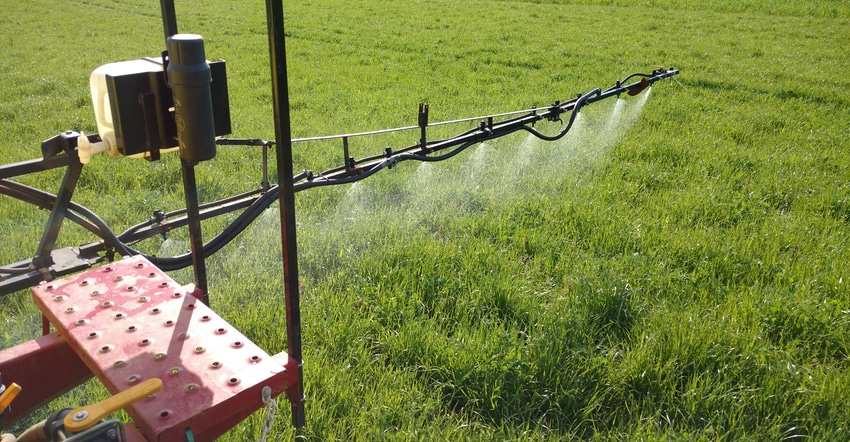February 23, 2017

Many farmers ask: When should I terminate my cover crop? My first answer is, by the time you’re required to do so if mandated by state regulation.
Beyond that, you should think through your cover crop control plan before you plant it. One big reason is that it’s too easy for annual ryegrass to grow out of control. More on that shortly.
Some cover crops are terminated due to winterkill. Other than that, the most important management component is what you’re trying to accomplish with the cover crop. If it’s moisture uptake and drying out the soil is desired, you’ll want to leave it to grow as long as possible and plant directly into it while still green.
This “planting green” practice is gaining acreage as farmers are learning to embrace this next-level cover crop management. Other benefits include maximizing its potential value, such as legume nitrogen production.
Some farmers even report less crop slug damage. It seems those pesky critters prefer a smorgasbord of cover crops for their diet over a corn or bean seedling. This practice requires closer management, equipment modification and diligence.
Here are four guidelines to follow on terminating cover crops:
1. Caution! The biggest risk in allowing cover crops to grow is a dry spell with no rain in sight. If this occurs near the outset of your primary planting window, a compromise is in order.
You may have to spray earlier so your cover crop doesn’t use up moisture that will need to be available to your cash crop. Also, for rookies, terminating earlier is advised; it’s simply easier.
2. Special instructions warranted for ryegrass. Follow specific guidelines for annual ryegrass control. Its deep roots, which accomplish much for nitrogen scavenging, plus the rather short top growth and waxy leaves, make this cover crop a challenge to kill. But if the termination rules are followed, many find it to be their favorite cover crop.
Annual ryegrass is best controlled when the first node is visible. That requires “down-on-your-knees” observation so you know the most susceptible control stage.
First, adjust your spray water to a pH of about 4.5 and a water hardness rating less than 3 grains per gallon. Add a spray-grade ammonium sulfate before adding glyphosate. I emphasize “before.”
Spray a high rate of glyphosate between 9 a.m. and 3 p.m., when the temperature is above 60 degrees F! Avoid mixing with a residual herbicide. Use only water as a carrier, and aim to apply 8 to 12 gallons per acre. While these suggestions rarely all align, this will give most satisfactory results.
3. Legumes deserve a delay. If maximum N production is desired, allow cover crops like hairy vetch or crimson clover to reach first flower. This may be into the middle of May for these popular legumes. But intentionally planting your corn into these fields last will make this a successful proposition.
4. Cereal rye is the most-used species. There’s no exact stage for termination, or height that’s correct for everyone. Some farmers kill it at 12 inches; others purposefully let it grow over 6 feet tall.
Aside from the moisture considerations listed above, cereal rye is easy to terminate and easy to plant into.
If it is over 18 inches, planting equipment needs to be adjusted to account for the higher biomass. In addition, a spoked type closing wheel is required to close the seed slot in the dense root mass.
The coach’s closer
Before you plant a cover crop, having a strategic plan for termination is paramount. Following these guidelines and proven tips will enable you to achieve your cover crop benefits and goals.
Groff, who farms on the Chesapeake Bay watershed, is a cover crop pioneer and innovator. Check out his website, covercropcoaching.com.
About the Author(s)
You May Also Like




